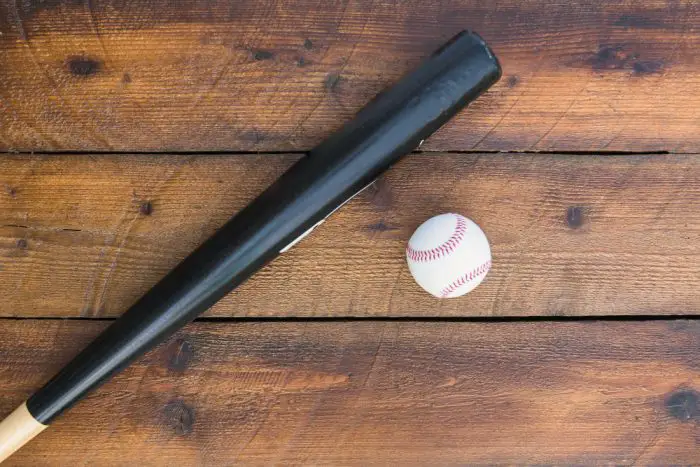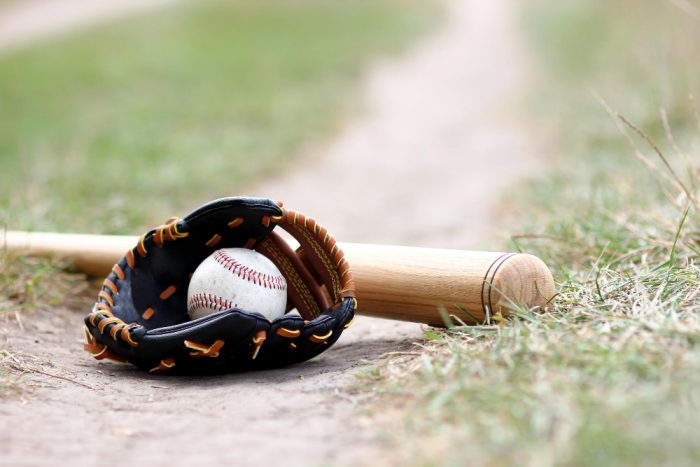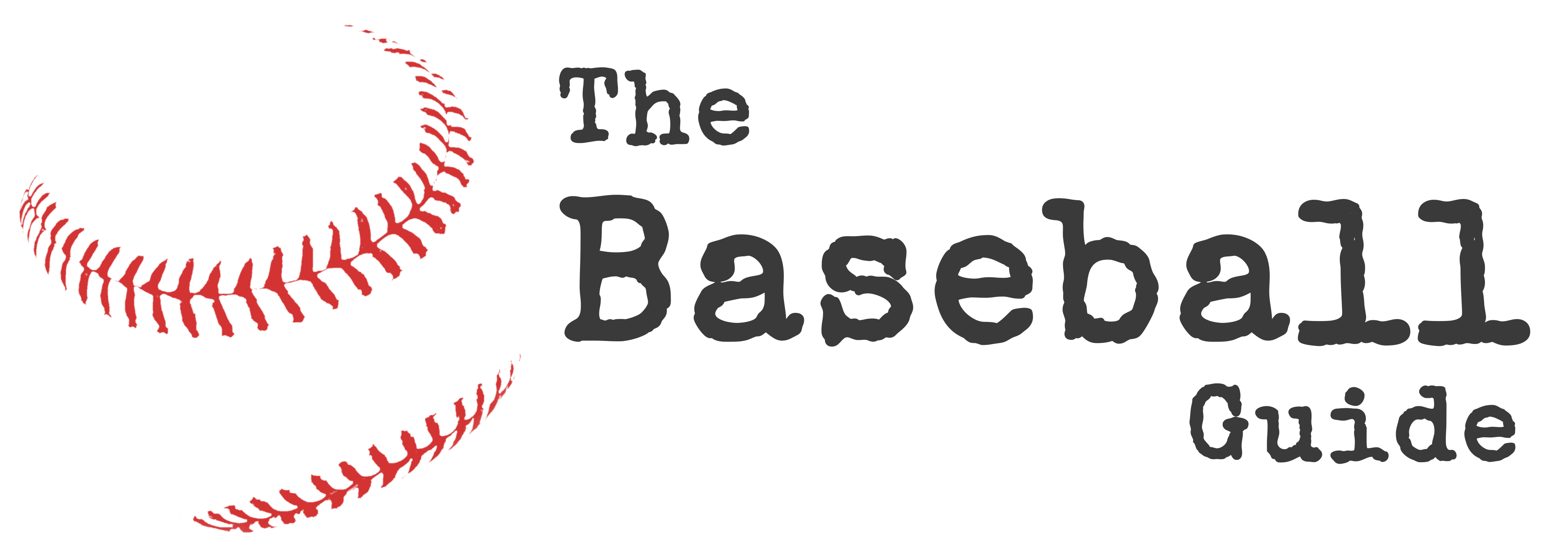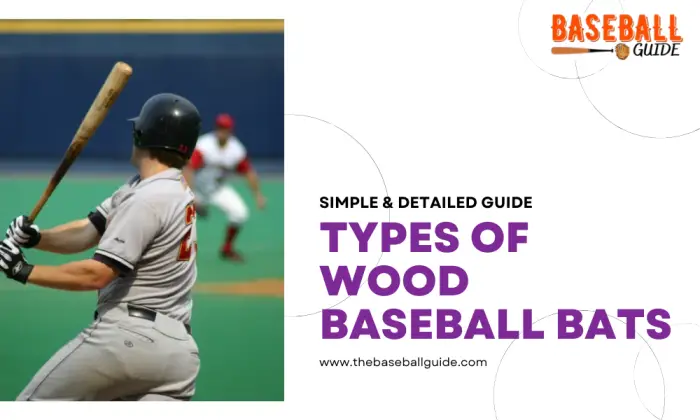The feel of a wooden baseball bat is everything a baseball player would want.
Using a wooden baseball bat will allow you to ‘feel’ every new technique you learn, every new way you can hit, or simply the movement of the bat as you swing it.
It takes more skill to play with wood baseball bats because they are slow to swing and heavy.
All Major League Baseball players use wood baseball bats because they reduce the ball’s velocity when it leaves the bat, protecting the players as well as the fans.
If you’re thinking about getting a new wood baseball bat, you should know that there are several different types available.
In this article, we’ll go over the various types of wood baseball bats so you can pick the one that’s right for you.

Wood Baseball Bats: Types
We’ll discuss the different types of baseball bats based on the turn model and the type of wood the bat is made from.
1. Bats By Turn Models
The designs for shaping and lathing a blank piece of timber into a finished product are called wood bat turn models.
Bat manufacturers have decided on a few common turn models that may be found in the hands of professional hitters over the years.
1.1 271
The 271 is the most common turn model and is the design usually referred to when we talk of a baseball bat.
The handle is 15/16″ thick at the top, then gradually tapers to a wider diameter all the way to the barrel’s end, where it reaches 2.5″ at the sweet spot.
This model is slightly end-loaded and may be used by contact hitters as well as power hitters. If you don’t know about end-loaded and balanced bats, then you can read this article.
1.2 I-13
The proportions of the I13 model are comparable to those of the 271, with a 15/16″ handle and a 2.5″ barrel. It has a thicker handle with a gradual taper.
The primary distinction between the I-13 and 271 types is that the tapering of an I-13 turn bat is more severe, resulting in a more end-loaded swing sensation than the 271 turn model.
1.3 M110
The M110 type features a regular-sized knob that sits beneath the 1″ thick handle, making the knob appear tiny in contrast.
The diameter of the barrel is 2.5″.
The model results in forming a lightweight bat because the majority of the weight is dispersed across a long, fairly constant taper.
This bat is ideal for players who are new to swinging a wood bat or for contact hitters who desire a speedier bat.
1.4 141
The 141 may be readily described as a cross between the barrel of the 271 and the handle of the M110, resulting in a bat with a long and progressive taper.
Due to the gradual taper, the bat has a balanced swing feel.
1.5 243
The 243 is popular among power hitters because of its huge and lengthy barrel size.
The proportions of this model are on another level, with a 2 5/8″ barrel diameter and a 29/32″ handle diameter.
2. Bats By Wood Type

Bats are made from various wood species, each with its unique set of qualities. If you’re a hitter and want to find out the best wood for baseball bats, you’ll want to keep reading to find the one that best fits your hitting style.
2.1 Maple
The most prevalent type of wood bat is the maple bat.
Maple is a diffuse-porous wood, which means the grains are dispersed throughout the wood rather than running in a single direction.
The particles inside a maple bat are kept together tightly and create a compact structure, resulting in a thick and robust bat.
The pores that are distributed inside the bat make it rigid and unable to flex, causing it to explode when it breaks.
2.2 Ash
Of all the several forms of wood bats, ash bats are the most adaptable and accommodating.
The grain lines that span the length of the bat make ash a robust and lightweight material.
Due to the bat’s low moisture content, grains will flake and splinter with time.
Contact hitters mostly prefer bats made from ash because of their flexibility and lightweight.
2.3 Birch
Birch is a softer, more flexible wood that may aid in the generation of whip-like speed across the striking zone.
Birch is a tougher wood than ash but not as tough as maple.
It is a curly-grained species, similar to maple, that will compress and resist flaking with time.
If you want the best of both maple and ash bats, birch bats are a fantastic choice.
2.4 Hickory
The early baseball bats were constructed of hickory, the heaviest and toughest of all wood bat types.
They are very inflexible, with no flex or trampoline effect and little feel.
Although these bats are the hardest to break, they are also the least effective, and maple, birch, and ash wood bats have largely replaced them.
2.5 Bamboo
Bamboo is classified as a ‘wood’ bat type, but it is not fair because bamboo is essentially grass, and baseball bats are created from it by gluing strips of it together and shaping them into a bat.
Nonetheless, these bats are not certified for MLB usage and must bear a BBCOR certification mark in order to be used in professional play. You can read more about BBCOR certification in this article.
But, if you are looking for a solid and durable bat, you should consider buying a bat made from bamboo.
2.6 Composite Wood
Composite bats are manufactured from two or more pieces of wood and may or may not include a synthetic resin or polymer covering.
The most durable type of wood bat is the composite wood bat.
They aren’t allowed in most professional baseball leagues, but due to their high durability, they are perfect for bat practice and are an excellent alternative for players who are new to wood bats.
Frequently Asked Questions About Wood Baseball Bats
1. What Type Of Wood Bat Has the Most Pop?
Wood bats made of maple have the most pop.
Maple is a highly dense wood, so a bat built of it will last a long time and have the greatest pop.
2. Which Wood Bat Breaks The Easiest?
Tougher woods, such as maple, are more likely to shatter because they do not bend when struck away from the barrel’s sweet spot.
3. Which Wood Bat Breaks The Least?
Composite bats are meant to be indestructible and highly durable while retaining the feel of a wood bat.
Conclusion
Now, you are aware of all the options available if you consider switching to a wood bat.
You may go through all of the content in this post and choose which of the bat kind best suits your needs. You can also look at this article that talks about the best wood bats for baseball.
But remember that you will truly know which one is ideal for you until you have experienced it for yourself.
You should try as many as you can to know the one that is made for you. You’ll be able to pick the sort that best suits you if you know your hitting style and swing.



